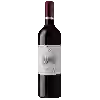
Château FontvieilleCôtes de Bourg Blanc
This wine generally goes well with pork, vegetarian or poultry.
Food and wine pairings with Côtes de Bourg Blanc
Pairings that work perfectly with Côtes de Bourg Blanc
Original food and wine pairings with Côtes de Bourg Blanc
The Côtes de Bourg Blanc of Château Fontvieille matches generally quite well with dishes of pork, vegetarian or poultry such as recipes of pasta carbonara, broccoli and blue cheese quiche without pastry or italian gnocchi.
Details and technical informations about Château Fontvieille's Côtes de Bourg Blanc.
Discover the grape variety: Franc de Haute-Saône
Franc noir de Haute-Saône noir is a grape variety that originated in France (Haute-Saône). It produces a variety of grape specially used for wine making. It is rare to find this grape to eat on our tables. This variety of grape is characterized by small bunches and small grapes. The Franc noir de Haute-Saône black can be found cultivated in these vineyards: South-West, Cognac, Bordeaux, Provence & Corsica, Rhone valley.
Informations about the Château Fontvieille
The Château Fontvieille is one of of the world's greatest estates. It offers 2 wines for sale in the of Côtes de Bourg to come and discover on site or to buy online.
The wine region of Côtes de Bourg
The wine region of Côtes de Bourg is located in the region of Côtes de Bordeaux of Bordeaux of France. Wineries and vineyards like the Domaine Roc de Cambes or the Château Tayac produce mainly wines red and white. The most planted grape varieties in the region of Côtes de Bourg are Merlot, Cabernet-Sauvignon and Cabernet franc, they are then used in wines in blends or as a single variety. On the nose of Côtes de Bourg often reveals types of flavors of oak, sweet tobacco or pineapple and sometimes also flavors of cigar, ripe blackberries or bell pepper.
The wine region of Bordeaux
Bordeaux, in southwestern France, is one of the most famous, prestigious and prolific wine regions in the world. The majority of Bordeaux wines (nearly 90% of the production Volume) are the Dry, medium and Full-bodied red Bordeaux blends for which it is famous. The finest (and most expensive) are the wines of the great châteaux of Haut-Médoc and the right bank appellations of Saint-Émilion and Pomerol. The former focuses (at the highest level) on Cabernet Sauvignon, the latter on Merlot.
The word of the wine: Vineyard
Said of a wine with a certain alcoholic richness and clearly showing the characteristics that distinguish wine from other alcoholic beverages.










